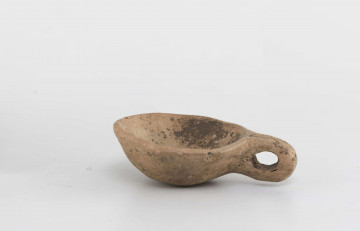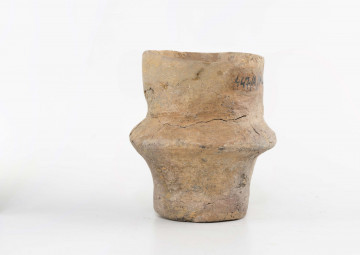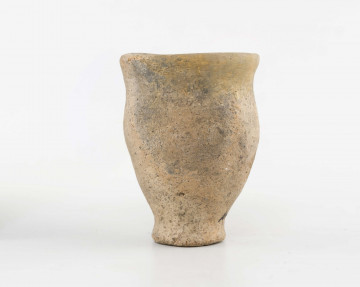
Scoop
National Museum in Lublin
Part of the collection: Set of archaeological relics found in the Lublin Region
The presented monument was discovered during archaeological research carried out in the 1960s in Putnowice Kolonia, the Chełm poviat. It was there, in the Bronze Age cemetery, in grave number 1, where a small clay bowl was found (less than 7 cm in diameter and barely 3 cm high).
The form of the vessel is not exceptional. The bowl is carelessly formed and has an uneven rim. Only the ornament makes it interesting. The centre of the interior of the bowl is decorated with dense imprints of rays forming a solar sign. It surrounds an oval field, in the centre of which there are several irregularly placed nail impressions.
Such an ornament may testify to the important role of the Sun in ancient communities. Finding such an ornamented bowl in a grave, as a gift for the deceased, may be connected to some solar ritual unknown to us today.
In the Bronze Age we notice a gradual transition from traditional skeletal burials to burning corpses and placing them in urns. Fire, invariably associated with the Sun, is here the power that accomplishes the transformation of the human body. The element was undoubtedly also used in various rituals performed during burials, as well as during visits to the dead.
A bowl with a solar motif found by archaeologists could have been a kind of amulet ensuring the deceased a safe passage to the next stage of life.
Author / creator
Dimensions
cały obiekt: height: 3,2 cm
Object type
dish
Technique
firing
Material
clay
Creation / finding place
Owner
The National Museum in Lublin
Identification number
Location / status

National Museum in Lublin

National Museum in Lublin

National Museum in Lublin
DISCOVER this TOPIC
National Museum in Szczecin
DISCOVER this PATH
Educational path